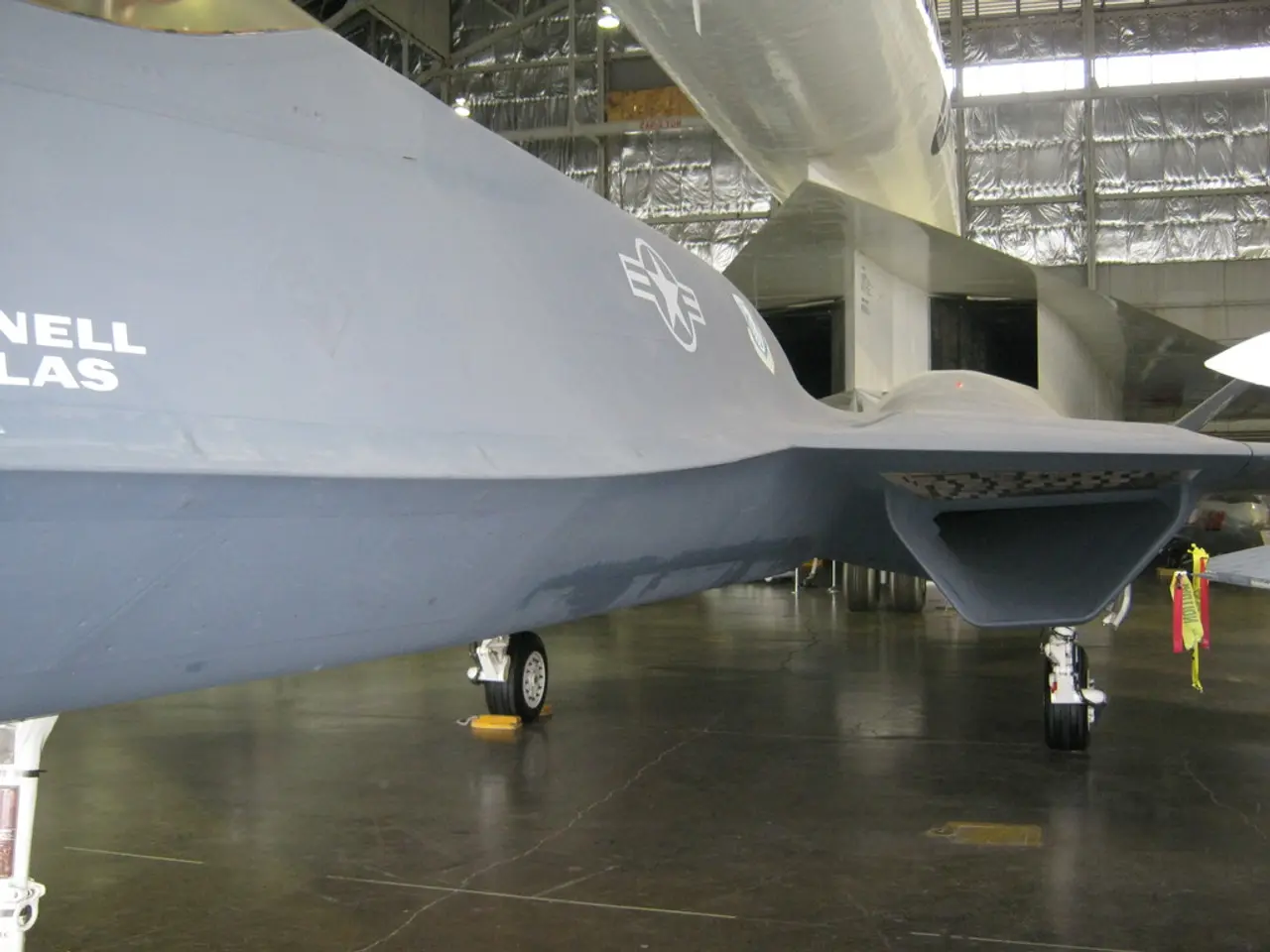Potential Risks of Cyber Assaults on Airline Systems
In the rapidly evolving digital landscape, the global aviation industry is increasingly vulnerable to cyber attacks. These malicious assaults, with significant implications for passenger safety, aviation business, and the industry at large, have been underscored by high-profile incidents such as the British Airways data breach in 2018, which incurred a GDPR fine of £183m.
Proactive cybersecurity is essential to combat this growing threat. This approach emphasises constant vigilance and the employment of sophisticated threat intelligence to stay one step ahead. Leveraging AI and Machine Learning is vital for predictive analysis and anomaly detection, providing real-time alerts in case of a breach.
Attackers frequently employ social engineering tactics, such as impersonating internal IT personnel or trusted contractors, to deceive help desks into granting access or resetting multi-factor authentication (MFA) credentials. Once inside, cybercriminals often deploy ransomware to encrypt critical systems or exfiltrate sensitive data, leading to extortion demands and threats to disrupt operations. Supply chain and third-party targeting are also common methods, with attackers infiltrating trusted third-party providers to gain access to airline networks.
The motivations behind these attacks are varied. Financial gain is the primary motivation, with attackers seeking ransoms through data theft or operational disruption. Airlines are particularly vulnerable due to the high cost of down-time and the sensitive nature of their customer data. Disrupting airline operations can also erode public trust, damage brand reputation, and impact investor confidence, making the sector a high-value target for those seeking notoriety or leverage in negotiations. Because airlines are part of critical national infrastructure, successful attacks have implications beyond financial loss, potentially threatening national security and public safety.
To mitigate these threats, airlines must adopt a layered defense strategy. This strategy combines technological controls, rigorous staff training, and robust incident response. Employee training on recognising social engineering attempts is essential, and simulated attack drills can help staff identify and respond to real threats. Strict access controls and MFA at all access points, especially for administrative and sensitive systems, are also crucial. Incident response and business continuity planning ensure rapid containment and recovery, and clear communication channels and backup systems maintain operations during an attack.
Vendor and supply chain security is another crucial aspect. Assessing and monitoring the security posture of third-party vendors, implementing contractual obligations for cybersecurity standards, and conducting regular audits of external partners can help reduce the risk of a breach. Continuous monitoring and threat intelligence are also vital, with advanced monitoring tools detecting anomalies in network traffic and user behaviour, and staying informed about emerging threats.
Legal and regulatory compliance is equally important. Adhering to cybersecurity regulations and frameworks specific to the aviation industry, reporting incidents promptly to authorities, and seeking legal guidance when facing extortion or data breach scenarios are all crucial steps.
In conclusion, airlines must be proactive in their cybersecurity strategies, implementing stringent software patching processes, comprehensive staff training initiatives, robust incident response plans, and collaboration with governments and cyber defence organisations. A shared approach to tackling cybersecurity among airline industry players can help improve overall standards and reduce the chances of cyber attacks sector-wide. Regular and robust cybersecurity training for staff can help spot phishing attempts or suspicious activity, reducing human error vulnerabilities. Cyber risk insurance can help soften the financial blow if a breach or an attack does occur. Protection from insider threats, Distributed Denial-of-Service (DDoS) attacks, and advanced encryption methods are necessary for securing passenger data at rest and in transit. The adoption of advanced security technologies like blockchain, Secure Access Service Edge (SASE), and Zero Trust Architecture is gaining traction. Implementing comprehensive cybersecurity practices is mandatory for airlines in their pursuit of navigational safety.
- To bolster proactive cybersecurity, the aviation industry relies on threat intelligence and advanced technologies like AI and Machine Learning for predictive analysis and anomaly detection.
- Social engineering tactics, including impersonation, are commonly used by cybercriminals to gain access or reset multi-factor authentication (MFA) credentials.
- Ransomware attacks are a frequent consequence of breaches, with cybercriminals encrypting critical systems or stealing sensitive data for extortion purposes.
- A layered defense strategy, combining technological controls, staff training, and robust incident response, is crucial for aviation industry cybersecurity.
- Vendor and supply chain security assessments, contractual cybersecurity standards, and regular audits can help reduce third-party breach risks.
- Adhering to specific cybersecurity regulations and frameworks, prompt incident reporting, and seeking legal guidance are key steps in maintaining legal and regulatory compliance.
- Training staff to identify social engineering attempts and simulated attack drills are essential for building a security-aware workforce.
- Comprehensive cybersecurity training can help reduce human error vulnerabilities, including spotting phishing attempts or suspicious activity.
- Cyber risk insurance provides financial protection in case of a breach or attack, serving as a valuable buffer.
- Advanced security technologies like blockchain, Secure Access Service Edge (SASE), and Zero Trust Architecture are being adopted to secure passenger data and improve industry-wide cybersecurity standards.




